This article was co-authored by Courtney Fose, RD, MS. Courtney Fose is a Registered Dietitian and Certified Nutrition Support Clinician at the University of Arkansas for Medical Sciences. She has worked as a Dietitian since 2009, and received her MS in Clinical Nutrition from the University of Arkansas in 2016.
There are 16 references cited in this article, which can be found at the bottom of the page.
wikiHow marks an article as reader-approved once it receives enough positive feedback. In this case, 94% of readers who voted found the article helpful, earning it our reader-approved status.
This article has been viewed 104,021 times.
A little over 5% of the US population claims to follow a vegetarian or plant-based diet daily.[1] An even larger percentage, about 10%, said they followed a plant-based diet some of the time. A pescetarian (or pescatarian) diet is a great eating pattern to help you focus on healthy plant-based foods, while giving you more flexibility with the inclusion of eating fish and shellfish. It can be an easier way to reduce the amount of meat you consume Following these tips can help you transition to a pescetarian diet.
Steps
Getting Started
-
1Commit to going meat-less. Typically, pescetarians follow a plant-based diet and do not consume red meat, poultry, pork or lamb. The majority of their protein is coming from plant-based sources like beans, nuts or lentils in addition to fish and shellfish. All other food groups — like whole grains, fruits and vegetables — are consumed on a regular basis.[2]
- A healthy diet goes beyond limiting animal products. In addition, you want to focus on well-balanced meals, healthy cooking techniques, limiting processed foods and refined sugar and drinking adequate amounts of water each day.
- Pescetarian diets are also beneficial to your health. They may help you manage or lower your cholesterol levels, and reduce your risk for cardiovascular disease.[3]
-
2Design your pescetarian diet. Depending on how restrictive you want your diet to be, you may chose to include or not include foods like eggs and dairy products; however, if you're transitioning from a typical, average diet, it may be easier to include dairy foods and eggs to help give you some variety.[4]
- Incorporate a variety of proteins into your pescetarian diet outside of seafood. If you're consuming eggs and dairy products, they're an excellent source of protein. In fact, the egg has the highest biological value of all proteins. The biological value provides a measurement of how efficient the body utilizes protein consumed in the diet.[5] In addition, don't forget about beans, lentils, nuts and whole grains!
- Ensure that your meals feature fruits, vegetables, whole grains and dairy (if you're including this) each day. This means you have a well-balanced diet.
Advertisement -
3Purchase print resources. Take a trip to your local or online book store and think about buying a few quality printed resources. Cookbooks and magazines that feature pescetarian recipes will help motivate and excite you as your transition to this new eating pattern.[6]
- Cookbooks have a wide arrangement of recipes and are a great resource to browse through. Plus, they generally have great photographs which can help motivate you to continue with your new eating pattern.
- Go beyond printed resources and find bloggers that post regularly about pescetarian recipes. They might also have good tips on adopting this new eating pattern.
-
4Find other pescetarians. Finding friends, co-workers or others who also follow a pescetarian diet can be helpful. They'll be a great support to you as you make your new diet transition.[7]
- You can try joining online communities or forums where you can post questions, link up with other pescetarians and get helpful information from others already following this diet pattern.
- Take a cooking class. Many restaurants, cooking stores and private companies offer cooking classes. Try signing up with a friend or family member for a class that focuses on seafood preparation.
-
5Discuss your new diet with your family. Transitioning to a new diet may affect more than just you. If you're living at home with your family, your dietary changes may influence what is purchased and prepared at home. Speak to your family members about what you'll be changing in your diet and what foods you will and will not be eating. Make sure they fully understand what a pescetarian diet is.[8]
- If some family members want to continue eating meat or animal products, that's OK. Discuss with them how you can accommodate both eating styles in your household. A quick family meeting will help.
- Ask your family members if they'd be interesting in following a pescetarian diet along with you. They might be interested in following a pescetarian diet a few days a week or a few specific meals during the week. Finding a common ground may help cut down on extra food prep for a variety of different eating patterns.
Implementing a Pescetarian Diet
-
1Prep your kitchen. Switching to any new diet or eating pattern will most likely require that you prep your kitchen and re-stock your pantry and refrigerator with new or different types of foods. Purchase a variety of seafood each week.[9]
- Keep frozen seafood, canned tuna or salmon or frozen salmon or tuna burgers on hand as well. They have a longer shelf life and can be used in a pinch or when fresh seafood isn't available.
- You might also want to consider purchasing special kitchen tools or equipment. For example, a fish filleting knife, fish spatula or boning tweezers; however, these aren't necessary for general seafood preparation.
- Purchase spices or seasonings that complement seafood well. For example, Old Bay is a mixed seasoning blend designed for fish and shellfish. It's a quick all-in-one spice that will boost up the flavor of your dishes.[10]
- In addition, stock up on fresh fruits, vegetables and whole grains so you have all the food groups to make well-balanced meals.
-
2Create weekly meal plans. If you're busy or on the go, prepping weekly meal plans can help you easily implement a pescetarian diet. Take an hour or two each week and write out each of your meals. Then, write up a grocery list of all the items you need to purchase that week. It'll help keep you on track and minimize the time you spending shopping and looking for items in the store.[11]
- Find meals that can be prepared in advanced. If your weeknights are busy, doing some meal prep on the weekends or during your free time can make weeknight dinners a breeze. Prepare lunches or parts of your dinners ahead to cut down on cooking time.
- Creating meal plans in advance can also help cut down on costs. You'll buy the items that you need and skip purchasing things you think you need but already have at home.
- Breakfast ideas can include: whole wheat English muffin with an egg and cheese; an individual low-fat Greek yogurt with fruit; or high-fiber, high-protein cereal with almond milk.
- Lunch ideas can include: grilled salmon over a spinach salad; two grilled shrimp and vegetable soft tacos; or lentil and vegetable salad with a vinaigrette dressing.
- Dinner ideas can include: grilled mahimahi with brown rice and steamed mixed vegetables; portobello mushroom burgers with baked sweet potato fries; or salmon burgers and a small green salad.
-
3Prepare pescetarian recipes. Seafood can be intimidating to prepare. Many people have never tried or only prepared one or two types of fish. Review a variety of recipes and keep trying new things. The longer you stick with the plan, the more comfortable you'll become preparing a wide variety of fish and shellfish.
- Try to incorporate some cold-water fish like salmon, tuna or mackerel. These fish are known as "fatty fish" and generally contain higher amounts of heart-healthy omega-3 fats. Try to consume these anywhere from two to three times per week.
- If preparing a seafood-based meal each night is overwhelming, try focusing on one new recipe or one new type of seafood per week. This will help expose you to a variety of cooking techniques, but will be less stressful.
- Start with a simple meal or recipe. Or incorporate recipes you already make that feature seafood more often into your weekly meals.
-
4Incorporate plant-based proteins. Fish and seafood are the defining trademarks of a pescetarian diet; however, don't forget about plant-based sources of protein too. Items like beans, lentils, nuts and whole grains are healthy, lean sources of protein.[12]
- Meat replacements, tofu, tempeh, seitan and veggie burgers are other great sources of protein that will fit into a pescetarian diet.
- Keep a stock of canned beans, nuts and whole grains for quick and easy meals.
- Plant-based proteins can also be the main source of protein in your meals. It's not necessary to make seafood the main source of protein in each meal. Quinoa, for example, is a great source of protein as it contains all nine essential amino acids.
Buying Fish and Shellfish
-
1Find a reliable fishmonger. It's important to find a trustworthy market with knowledgeable staff. The fishmonger is person at the store or market who orders, handles and manages all the seafood and the department. They will be able to provide accurate information on the quality of the seafood, whether it was fresh or frozen, whether it was farmed or wild and how sustainable the fish is.[13]
- Try to avoid road-side stands that sell seafood. You won't be able to tell where or when the seafood was harvested or know the reliability of the individual selling it to you.
- Also invest some time reading and researching websites like Seafood Health Facts or Fish Watch. They are reliable, trustworthy sources of information. They review the safety, sustainability and health of seafood.
-
2Choose both fresh and frozen fish. Many people think that fresh foods are always better; however, many times frozen foods — especially seafood — are sometimes fresher. When fish and shellfish are harvested, they are immediately cleaned and frozen on the boat — at the peak of freshness. Many times, seafood that's labeled as fresh was harvested several days prior, however it should have never been previously frozen.
- Ensure you thaw frozen fish properly. Take frozen items and place them in a sealed container in the bottom of the refrigerator and allow them to defrost overnight.
- Purchase frozen fish that's packaging is intact and completely frozen solid.
- At well-stocked grocery stores and markets, there are a large variety of frozen fish and shellfish available. Your options are far from limited if you choose frozen items.
-
3Evaluate the quality of your fish. Once you have chosen the store or market where you're going to purchase your seafood, evaluate the quality and freshness of the options available. Look at the display or counter. All seafood should be kept at 32 °F (0 °C) and be on ice.[14]
- When you're purchasing whole fish like a trout or mackerel, pay attention to the eyes. They should be bright and clear. As fish ages, the eyes will get cloudy and sunk in — this will indicate fish that is not fresh.
- Fish fillets should have firm, elastic flesh. They should also have a clear, shiny appearance to them. Fillets that are prepackaged should contain some liquid, however it should be at a minimum.
- Shellfish like mussels, oysters or clams can be sold live, cooked or freshly shucked. If you're purchasing live shellfish, look for unbroken shells that close tightly if squeezed. If the shells do not close, they are most likely dead and not fresh.
- Scallops are also considered shellfish, but are generally sold freshly shucked. They should be firm with a creamy white color and a slightly sweet smell. Scallops that smell sour indicate they are most likely spoiled.
- Do not hesitate to ask to look at your fish selections up close. You'll get a better idea of what it smells like, how its flesh looks and its overall appearance.
-
4Research sustainable seafood options. Try to choose fish and shellfish that are ethically farmed or raised. You can always ask your fishmonger for more information on the items they have for sale. In addition, check out the EDF Seafood Selector Guide for more information.
- Sustainable seafood includes fisheries that handle plentiful species in addition to species that are lower on the food chain (they can reproduce quicker and maintain an adequate population).[15] They also have to maintain a variety of very high standards and fishing practices.
- Choosing fish and shellfish that are sustainable helps ensure some more rare species are not overfished. When certain species are overfished, it increases their chances to reach critically low levels which can affect the environment, food chain and the longevity of the species.
- Sustainable species include fish such as: Alaskan Cod, farmed Arctic Char, Atlantic Pollock, Catfish, Dover Sole, U.S. MahiMahi, Alaskan and Canadian Halibut and farmed Rainbow Trout [16] .
Making Your Diet Balanced
-
1Decide on eggs and dairy. Many plant-based diets like the pescetarian diet do include eggs and dairy products while others do not. These foods, especially when ethically raised, are a great and healthy addition to your diet. Both are wonderful sources of protein in addition to having a variety of important nutrients.[17]
- You can also trying using dairy alternatives like soy or almond milk, soy based yogurt or vegan cheeses. This will allow you more flexibility with your food choices and recipes.
- If you choose to omit eggs and dairy be mindful to replace the nutrients prevalent in those foods. For example, dairy foods are high in calcium. Try getting your daily calcium from foods like dark greens, almonds or fortified orange juice.
-
2Eat fruits and vegetables daily. Although a pescetarian diet does have a focus on fish and shellfish, you cannot forget about the main components of this type of diet — fruits and vegetables. Produce is truly the crux of all healthy diets. These plants are high in fiber, vitamins, minerals and antioxidants. They're incredibly important to your diet and health.
- Make 50% of most of your meals a fruit or vegetable. These low-calorie, nutrition powerhouses will fill you up, keep you satisfied and add an array of nutrients to your diet.
- When you're including fruits and vegetables into your diet, try to eat fruits and vegetables that are different in color each day. You'll get a variety of different nutrients with each colored fruit or vegetable.
-
3Include whole grains. Many people forget that whole grains are not only a great source of fiber, but also contain protein.[18]
- Pair whole grains with legumes like lentils and beans for the perfect protein combo. Pairing these two types of foods together makes them a complete protein. This means, this combination has all of the necessary amino acids for your body.
- Aim to make most of your grain choices whole grain if possible. Try whole grains like brown rice, quinoa, 100% whole wheat pasta, farro or oats.
Warnings
- Be aware that fin fish (like salmon, tilapia or tuna) and shellfish (like crabs, shrimp or oysters) are two of the top most common food allergens. Avoid a pescetarian diet if you have diagnosed food allergies or sensitivities.⧼thumbs_response⧽
- Be mindful of mercury content. Most fish and shellfish contain trace amounts of mercury. Some species — like swordfish— contain higher amounts and should be eaten in smaller quantities. Mercury poisoning is rare, but be mindful when choosing your seafood. Pregnant women or women trying to get pregnant should avoid all fish and seafood with higher levels of mercury. For a complete list, review the FDA list: https://www.fda.gov/food/metals-and-your-food/mercury-levels-commercial-fish-and-shellfish-1990-2012⧼thumbs_response⧽
- Be mindful of raw or undercooked fish and shellfish. It's unsafe for women who are pregnant, trying to get pregnant and anyone with a compromised immune system to consume items like sushi or ceviche.[19]⧼thumbs_response⧽
References
- ↑ https://news.gallup.com/poll/267074/percentage-americans-vegetarian.aspx
- ↑ https://www.nhs.uk/live-well/eat-well/how-to-eat-a-balanced-diet/the-vegetarian-diet/
- ↑ https://www.unh.edu/healthyunh/blog/nutrition/2020/09/pescatarian
- ↑ https://www.nhs.uk/live-well/eat-well/how-to-eat-a-balanced-diet/the-vegetarian-diet/
- ↑ https://www.ncbi.nlm.nih.gov/pmc/articles/PMC3905294/
- ↑ https://www.unh.edu/healthyunh/blog/nutrition/2020/09/pescatarian
- ↑ https://extension.psu.edu/using-social-support-to-help-our-healthy-behavior-goals
- ↑ https://extension.psu.edu/using-social-support-to-help-our-healthy-behavior-goals
- ↑ https://www.myplate.gov/tip-sheet/healthy-food-preparation
- ↑ https://www.med.navy.mil/Portals/62/Documents/NMFA/NMCPHC/root/Health%20Promotion%20and%20Wellness/March%20-%20Healthy%20Eating/Spice_It_Up_Fact_Sheet.pdf?ver=UjjRcuGiu7-GdiN70oufcw%3d%3d
- ↑ https://www.myplate.gov/tip-sheet/meal-planning
- ↑ https://www.cedars-sinai.org/blog/is-vegetarian-or-vegan-diet-healthy.html
- ↑ https://www.fda.gov/food/buy-store-serve-safe-food/selecting-and-serving-fresh-and-frozen-seafood-safely
- ↑ https://www.seafoodhealthfacts.org/safety/guide-to-selecting-seafood/
- ↑ https://www.fisheries.noaa.gov/insight/understanding-sustainable-seafood
- ↑ http://seafood.edf.org/guide/best
- ↑ https://medlineplus.gov/ency/article/002465.htm
- ↑ https://www.heart.org/en/healthy-living/healthy-eating/eat-smart/nutrition-basics/vegetarian-vegan-and-meals-without-meat
- ↑ https://www.seafoodhealthfacts.org/safety/seafood-safety-overview/
About This Article
If you want to become a pescetarian, which is someone who doesn’t eat meat but eats fish, shop for a variety of fresh seafood and stock your kitchen with frozen and canned seafood to eat whenever you don’t have any fresh seafood available. When cooking at home, try and eat cold-water fish like salmon, tuna, and mackerel that’s high in heart-healthy omega-3 fats 2 to 3 times a week. Along with seafood, eat plenty of fruits and vegetables as well as whole grains to make a balanced diet. You can also replace meat with plant-based proteins like tofu, beans, and lentils. For more help from our Dietary co-author, including how to evaluate the quality of fish and shellfish at the market, read on!
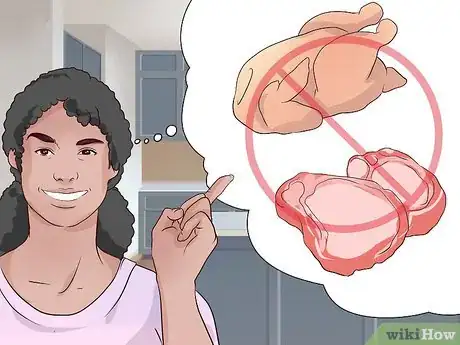




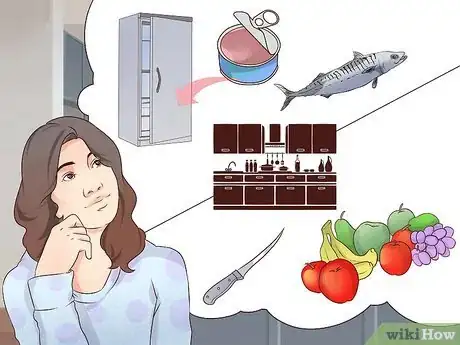

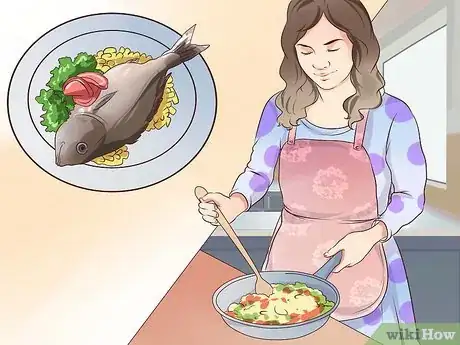


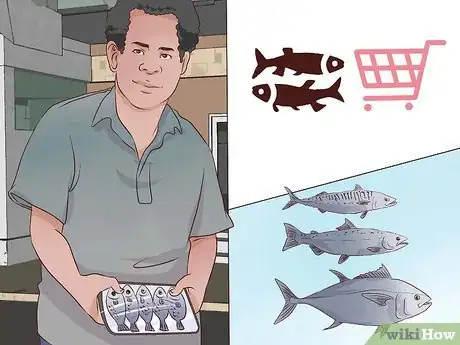
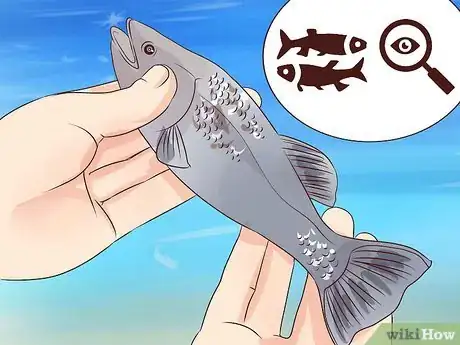
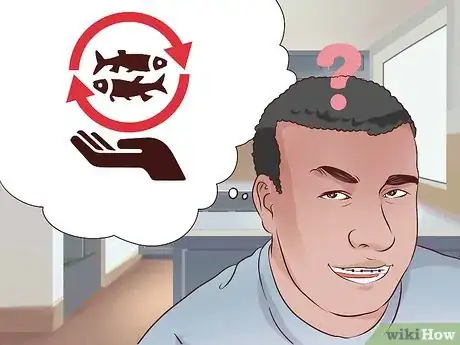


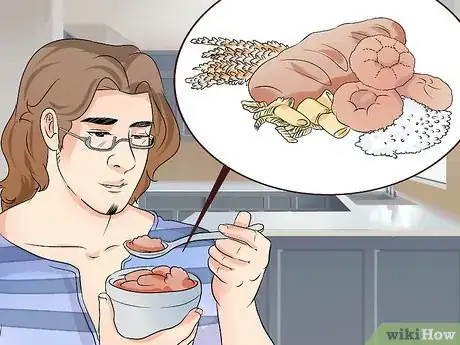

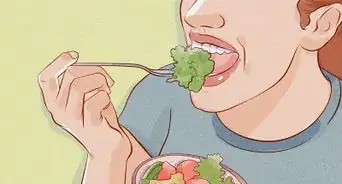

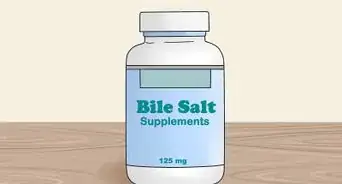

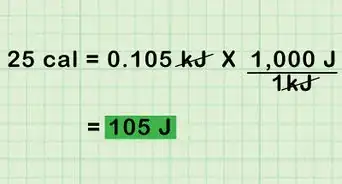


















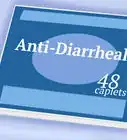



































Medical Disclaimer
The content of this article is not intended to be a substitute for professional medical advice, examination, diagnosis, or treatment. You should always contact your doctor or other qualified healthcare professional before starting, changing, or stopping any kind of health treatment.
Read More...